READER COMMENTS ON
"VIDEO: A Quick Update to Dan Rather's 'Trouble with Touchscreens' Report"
(11 Responses so far...)
COMMENT #1 [Permalink]
...
Cliff Durfee
said on 9/13/2007 @ 11:11 am PT...
THE MISSING SECOND STEP
I heard Dan Rather on the Thom Hartmann radio show on Aug. 14, 2007. I really trust Dan Rather and I wish we could return to the days where we had anchor persons like him. My great wish is that the following information will be brought to DAN's ATTENTION because it truly deserves serious investigation-- it is a way to shore up voting integrity and it allows us to take the NEXT step in using technology with voting. You see, using technology in the voting system is a TWO STEP process (as the dance implies) and our problems with voting machines is that we've only taken ONE STEP.
It is great that he (Dan) has been investigating voting integrity because it is one of the big three* of the challenges that threaten America. For TWO years I've been trying to get people's attention on the subject of the SECOND STEP.
Why do you NOT have to do investigative reporting on what machines they use at a bank or ATM's across the country? Who develops the software, can we view the source code, inspect the hardware, etc.--WHO CARES? THE ANSWER is that because if the banks DO make a mistake, the customer can VERIFY the END RESULT and they have a tiny little receipt in their hand that can prove the mistake. That is the MISSING SECOND STEP in using technology with our voting system-- a way to not only verify the result by any individual, but the ability to prove error if it exists. So far only the first step has been taken.
The problem isn't the fact we might use touchscreens as an input device. The problem is that we don't take the process to the SECOND STEP which would allow user verification of the end result and thus in effect, confirming the validity of the multitude of intermediate processes in getting the vote counted correctly.
If you want to pull the rug out from underneath all the errors, potential corruption, the outsourcing of our voting machines and even the lack of transparency... the system I have developed can do it. But, someone needs to look at the concept I've come up with. It allows voters to be able to VERIFY their votes in the final database AFTER they've voted. Doesn't that make sense? NOT EVERYONE needs to verify, it is optional, yet the very idea that anyone CAN creates an overwhelming threat to those who might want to tamper or even be careless with the votes. Voters can also prove error with a tiny encrypted receipt about the size you get from a fast-food restaurant.
With over 20 years in software engineering and internet technology, I am not a novice, and everyone who looks in detail at my proposed solution to voting integrity and understands it says, "Yes, that would do it!" I put all the main details including a Flash presentation on a web site: www.voteandverify.com Please read about it. The Vote and Verify method does much more than just a paper record. Please examine this table showing comparison of it's many advantages over other paper record systems. (if it doesn't appear here, view it on the voteandverify.com web site)
www.voteandverify.com
If we focus hours on the problems, can't we spend a few minutes thinking about a SOLUTION?
Please do not dismiss this approach with casual responses. Almost every "but what about this, or that" is covered if one takes the time to investigate more. I believe the voting mess we've gotten into is caused by only taking the FIRST STEP in technology. It's time to get the voting dance right with the SECOND STEP. With this system, it wouldn't matter if the voting machines were made in China, Russia or whatever... the Voter can prove whether they're working right or not.
Thank you very much,
Cliff Durfee
www.voteandverify.com
COMMENT #2 [Permalink]
...
Floridiot
said on 9/13/2007 @ 12:18 pm PT...
Ack, the DREs cost too mucking fuch to maintain, period.
COMMENT #3 [Permalink]
...
Brad Friedman
said on 9/13/2007 @ 12:21 pm PT...
Many of us here are working on SOLUTIONS. One such solution --- the most obvious one --- is a paper BALLOT for every vote cast that can be transparently counted, again and again as needed, by anyone who would like to.
Some questions about your proposed system that I was unable to figure out based on your website:
+ How would it prevent vote buying? It seems like it would allow for exactly that.
+ Though we might be able to tell if *our* vote is in the database correctly, I'm not sure how we would know that it's actually counted correctly in the master database. For that, I believe we'd need to be able to see *all* of the votes, and how they are recorded, not just our own.
+ If the e-voting machine used in your system to create these receipt/paper-trails breaks down on election day, how are the voters to cast their vote?
Those are just some of the questions that come to mind. Sounds like there's a lack of transparency, along with a great possibility of vote buying/selling in your system and still the need to "trust" the system, instead of being able to verify with the eyes of the citizenry.
If I am misunderstanding it, of course, I'd love to know where I'm getting it wrong. Thanks in advance!
COMMENT #4 [Permalink]
...
Cliff Durfee
said on 9/13/2007 @ 4:40 pm PT...
Brad,
Thank you for your excellent questions. The first two were addressed on the web site www.voteandverify.com. Remember too, that all of my analysis has been done with zero budget. Should this approach be pursued, the recommendation would be to establish a group of experts with the equivalent expertise of Nasa scientists to cross all the t's and dot the i's.
1) How would this prevent vote buying? This is addressed in some detail in the FAQ on the web site, Question #4
Here is a summary of just part of how it works (sorry for so many words): The encryption and coding of the receipt makes it virtually infeasible. If you're familiar with advanced technology in encryption, (and this is even something called dynamic encryption), it is basically impossible to decode the receipt to see who you voted for without the very protected decoding algrothms. The dynamic encrption insures that even if two people voted for identically the same people/issues, their codes would not at all resemble each other. Also, your identification is not included on the receipt, but it can be determined from the numbers if you correctly allowed to vote at the voter station.
Of course, then you might say, what good is a receipt if I can't read it? Before leaving the voting station, you can use a special decoding machine(s) to scan and decode your receipt so you can confirm that your receipt shows the right votes. After leaving the voting station, you can also go to one of the authorized voting verification web sites to verify that your votes made it into the final data base correctly. People without internet access can go to public libraries and/or to friends to verify. But not everyone needs to verify.
There are even provisions for you to decode your encrpted numbers even after you left the voting station, but special security is used to make it extremely difficult to use the service for vote selling purposes, and, it could expose those who are are. Of course in case of audits, or recounts, codes can be checked for correctness. By the way, your tiny receipt is printed in duplicate and one is taken by the voter station in case of recounts.
2) Though we might be able to tell if *our* vote is in the database correctly, I'm not sure how we would know that it's actually counted correctly in the master database. This is addressed in some detail in the FAQ on the web site, Question #3
In summary, the totals are not verified by individual voters, but by various groups with competing reasons to want it to be correct. The entire voter database would be subject to detailed audits and independent total verification by a variety of different organizations. (democrats, republicans, independents, authorized auditors, etc.) Though the primary database would be protected and archived, multiple copies would permit the scrutiny of independent examination and comparison of vote totals. And of course, the total number of votes must not exceed the total number of votes recorded on election day, which prevents adding additional records to the system.
3) If the e-voting machine used in your system to create these receipt/paper-trails breaks down on election day, how are the voters to cast their vote?
If your are to use STEP 1 of touch screen or other technology, I'm showing that it is incomplete without STEP 2, a way for each individual to verify and prove error in the final database. Redundancy is the protection with machines, so if you choose to use touch screens or the like, have multiple machines so that if one breaks, the others are used. Also, we should have the voting day off (instead of Columbus Day let's take voting day off) so there is more relaxed pressure that day or on two days. Repair crews or replacements might even be possible then. NOTE: even with paper ballots, they at some point enter ELECTRONICS.. either through scanners, people digitizing them, vote tallys, etc. Vote and Verify will even tell you if some ballots were lost and if any errors occured at ANY POINT ALONG THE WAY. Paper ballots won't. Be sure to view the comparison chart on the web site at: www.voteandverify.com
4) Regarding 'transparency.' I respectfully disagree. Vote and Verify gives the ultimate in transparency where it truly counts by allowing each individual voter to confirm his/her votes were actually counted. No other system offers this and it is ultimately what could bring great confidence back to the voters. Also, because of the independent and competing groups being able to examine, total and tally copies of the final data base, great transparency is achieved-- much more than currently exists, or would likely exist in any other scheme. What's really cool is that this system not only makes sure the touch screens are working correctly, but it makes sure that every intermediate process is working correctly. We no longer need to care who made the touch screen machine, what their source code looks like, etc. And, if errors are found, it can be traced right to the exact touch screen and who was responsible for that machine. So I maintain that this is the ultimate in transparency.
Thank you Brad for taking the time and offering your fine questions, and thank you for all you do. I am confident that all of the considerations could be resolved with a team of people and a budget. I'm also still very confident that I would personally like to feel as safe voting as I do making a deposit at a bank. Even with regular paper ballots that so many suggest, I could have a lingering feeling... 'did it really get into the final tally?' Vote and Verify can let me know it did and let me prove it if it didn't. Very cool!
COMMENT #5 [Permalink]
...
Marjorie G
said on 9/13/2007 @ 5:31 pm PT...
I know we're seeking bi-partisan solutions, and given that the National Guard story was a trap on a story that was basically true, Rather may have to avoid the stolen election aspect. Yet, using the intention to kick start the HAVA/voting machine industry, doesn't tell all.
A complete look at 2000 reveals Jeb Bush donor and Seqouia owner, Jefferson Smurfit group, also the owner of a paper-based company. I have links to those facts.
Should Rather include, or just stick to Sequoia's bad record of quality and service? What else is included the follow-up John Gideon mentioned. The California review?
COMMENT #6 [Permalink]
...
AllAboutVoting
said on 9/13/2007 @ 5:35 pm PT...
I am not familiar with the Vote-and-Verify system so I cannot comment on it.
It is similar in premise to another voting system that I becoming a fan of, Punchscan.
The idea that elections need to support the ability for voters to verify that their vote was:
* cast as intended
* recorded as cast
* and counted as recorded
...is important to me and is lacking from all voting systems used in public US elections - including hand counted and opticalscan paper ballot systems.
COMMENT #7 [Permalink]
...
Phil
said on 9/14/2007 @ 2:02 am PT...
I would like to take the time to remind everyone that EVERY electronic system that is COUNTING VOTES can not be validated.
This is because humans can not physically see electrons. They can try to read what they "THINK" is the logic, they can take MEASUREMENTS, but they can not PHYSICALLY SEE THE ACTUAL ELECTRONS.
This is common sense PHYSICS.
Based on that alone I would toss out the "Vote-and-Verify" system.
But then I come from an electronics background, and most people don't.
If you want to use electronics, only use them to PRINT a PAPER BALLOT TO BE HAND COUNTED.
Not to do the counting! That's where everything get screwed.
You need not be familiar with CRYPTO to understand ELECTRONICS. Crypto is simply a software program. Software runs on hardware, Hardware has electrons pass through it. In this case with your Vote-and-Verify garbage those electrons that PASS THROUGH the hardware have vote information on them.
That's where your system becomes vaporware. But we have enough stupid people out there that someone will buy into another un-validatable vaporware system. It's also interesting that you use the term Validate in the name, when in fact nobody can validate anything about your system. But when folks see "VALIDATE" in the name, they turn your Zero Budget idea into a billion dollar corporation with no accountability.
And I have to disagree with you when you say no matter what the votes enter electronics.
Pure crap. Stop spreading lies. That false. They didn't were not digitized into electronics 200 years ago! And there's no reason they should today. Unless your trying to invisibly steal the vote of course.
But go ahead and keep pushing more bad technology (even on your Zero Budget) and let that plan among others keep screwing up our elections in this country and by proxy wasting billions more dollars and killing more people. I mean hey, if you don't want the United States around much longer, just keep doing what your doing. Keep pushing half-measures, keep electing our oath of office breaking representatives in a court instead of by the people.
Using your system, I don't see the point of voting at all anymore.
But of course, our country is in such chaos with electronic voting all ideas are welcome (even if they are bad ideas) because that really all there is left is ideas. What we are doing now doesn't work. If it worked it wouldn't have been in the courts so much. And now that the courts are stacked politically, justice is peeking from under the blindfold.
In the end, You might become rich, but we'll all be dead.
COMMENT #8 [Permalink]
...
the_zapkitty
said on 9/14/2007 @ 8:07 am PT...
... Brad asked...
+ How would it prevent vote buying? It seems like it would allow for exactly that.
... and Cliff Durfee lied in response...
"special security is used to make it extremely difficult to use the service for vote selling purpose"
... and so forth even on the web site... and... Durfee lies from the start.
The (supposed) methodology that (magically) prevents vote buying is NOT available on the web site.
"That only leaves the one challenge of how can you can let the voter confirm what those numbers mean without him/her being able to sell it?"
This is solvable, and would be part of the advanced study of this to find best solution.
So... all of this starts out with deception and yet Durfee is still trying to shove this muddled crap as an "election solution for 2008"...
Sans a working methodology and some actual math I don't feel obligated to pursue it any further.
COMMENT #9 [Permalink]
...
Phil
said on 9/14/2007 @ 9:31 am PT...
I didn't even visit the website. To be honest.
The description of the physics alone is all I needed to understand and cut it down.
Don't be mad at someone trying to supply a solution. But cut that solution down fast if it sucks. As we well know things happen fast and they are apparently timed that way, to do maximum damage. Although, I have no proof of it being timed, since I have not the time to research history.
Maybe an army of high school students have have the time?
COMMENT #10 [Permalink]
...
Phil
said on 9/14/2007 @ 9:42 am PT...
I would have everyone step back, Yet one more time.
Now clear your minds.
I have a little visualization I use on ALL problems. I imagine myself out in space looking down on Earth.
How can an astronaut vote?
Answer that, and answer it so that nothing can go wrong, and you have your answer to this electronics being used in elections problem.
In the immediate, with my common sense, I would say that a packet burst to a radio receiver connected to a printer would be the answer with video of the PAPER BEING PRINTED transmitted back to the Astronaut.
That's not without it's problems say a looped video of a fake ballot being transmitted back. But my personal opinion is that something like this is what is going to have to be.
If it ain't, then just like currently, WE HAVE NO RIGHT TO VOTE.
You wanna talk about solutions, then answer back. You wanna talk about profit at the expense of lives and our constitutional republic, then you won't bother answering.
The fun thing is that you can not trick me either way.
COMMENT #11 [Permalink]
...
Brad Friedman
said on 9/16/2007 @ 1:55 pm PT...
Responding to Cliff's response (#4), along with a request to ZapKitty that he not attack someone as a "liar" for posting what appear to be legitimate responses to legitimate questions.
I'll refer you back to the questions and responses themselves, rather than re-quote them here, due to lack of time to respond.
1) Still have no clue how this prevents vote buying. As well, it sounds like I've got to trust both your encryption technology to show me that my vote was recorded accurately in the first place and that trust that it was recorded accurately in the database later.
Presuming I trust your encryption technology (which I don't, and should not have to), the at home verification you speak of, seems to tell me nothing about whether or not my vote is accurately in the database or not. I can find out if my vote is there, but not whether it's been accurately recorded. THus, I can neither verify that my own vote was recorded correctly and, more importantly, cannot verify that anybody elses was either. Ever.
Add to that the ease of flipping votes, without voter detection, on such systems (as shown, in part, by studies at both Rice and MIT/Caltech) and we seem to be treading water with this system.
You also suggest that "your identification is not included on the receipt, but it can be determined from the numbers if you correctly allowed to vote at the voter station."
Not sure what that means precisely, but it suggests it would also be possible for those with access to the main database and/or encryption key to determine *who* voted for what. Thus, losing *all* privacy (as with DREs now, for example, that include timestamps on the paper trail or audit logs). If I've misunderstood your comment on that score, I'll apologize in advance.
2) You may trust "democrats, republicans, independents, authorized auditors, etc." to ensure the accuracy of the votes, but I don't. Those were the same groups enlisted to ensure the accuracy of the votes in both Ohio '04 and Florida '00 and it seems to me they failed in both cases. Miserably. Only completely transparent to any member of the public will give us a fighting chance to ensure each election is counted accurately.
3) You say "If your are to use STEP 1 of touch screen or other technology, I'm showing that it is incomplete without STEP 2, a way for each individual to verify and prove error in the final database."
Well, for a start, I still fail to see how your system would allow me to verify that the Presidential Election in, say, Cuyahoga County, OH in 2008 was counted accurately.
But worse, your argument regarding "If we are to use STEP 1" is akin to arguing: "Well, if we are to allow drunk drivers on the road, let's at least build guard rails on every street and require every system where helmets and body armor if they go out for a walk".
I say, let's NOT let drunk drivers drive if we can help it. And let's NOT use election systems (DREs) which we know, for a fact, cannot be used safely at any speed. That, rather than trying to make up for the initial failure.
4) "Vote and Verify gives the ultimate in transparency where it truly counts by allowing each individual voter to confirm his/her votes were actually counted." And you opinion about "where it truly counts" would seem to be vastly different from mine. That's even if I stipulate that your system allows the voter to actually verify their vote is counted correctly (which, so far, I do not see as occuring).
Where does transparency "truly count"? It counts before, during and after the election. When citizens ought to be able to oversee every aspect, of every election, so that any one of them can adequately answer the question for themselves: "Was this election accurately tabulated?"
Shy of that, your admirable efforts seem to be addressing an issue which isn't really at the heart of the problems we currently face in our elections.
And one last comment in response to your thought: "Even with regular paper ballots that so many suggest, I could have a lingering feeling... 'did it really get into the final tally?'"
No need to have such a lingering feeling. You can go and count those paper ballots yourself. As long as they actually exist.


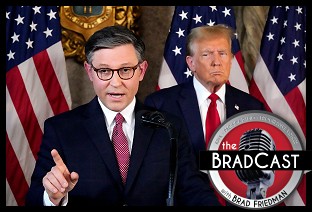 'A World of Tyrants,
'A World of Tyrants,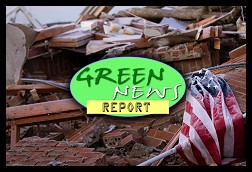 'Green News Report' 5/22/25
'Green News Report' 5/22/25
 'Dangerous Times': Climate Scientist Warns Trump 'Censorship' Endangering Nat'l Security: 'BradCast' 5/21/25
'Dangerous Times': Climate Scientist Warns Trump 'Censorship' Endangering Nat'l Security: 'BradCast' 5/21/25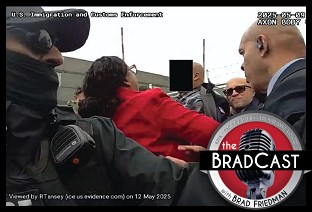 And Then They Came for Members of Congress...: 'BradCast' 5/20/25
And Then They Came for Members of Congress...: 'BradCast' 5/20/25 'Green News Report' 5/20/25
'Green News Report' 5/20/25 Appeals Court Blocks Last Route for Voters to Challenge Violations of the VRA: 'BradCast' 5/19/25
Appeals Court Blocks Last Route for Voters to Challenge Violations of the VRA: 'BradCast' 5/19/25 Sunday 'Now Hoarding' Toons
Sunday 'Now Hoarding' Toons Mad World:
Mad World: 'Green News Report' 5/15/25
'Green News Report' 5/15/25 Plane Corruption and the Future of the DOJ: 'BradCast' 5/14/25
Plane Corruption and the Future of the DOJ: 'BradCast' 5/14/25 'Deeply Evil': GOP Proposes Largest Medicaid Cuts in History: 'BradCast' 5/13/25
'Deeply Evil': GOP Proposes Largest Medicaid Cuts in History: 'BradCast' 5/13/25 'Green News Report' 5/13/25
'Green News Report' 5/13/25 And Then They Came for the Mayors...: 'BradCast' 5/12/25
And Then They Came for the Mayors...: 'BradCast' 5/12/25 Sunday 'New Guy, Old Guy' Toons
Sunday 'New Guy, Old Guy' Toons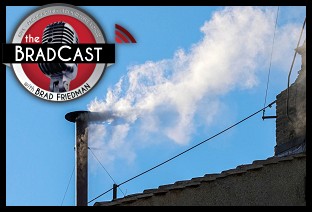 Blowing Smoke. At the Vatican and White House: 'BradCast' 5/8/25
Blowing Smoke. At the Vatican and White House: 'BradCast' 5/8/25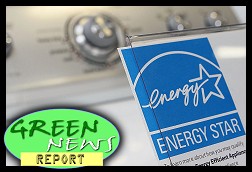 'Green News Report' 5/8/25
'Green News Report' 5/8/25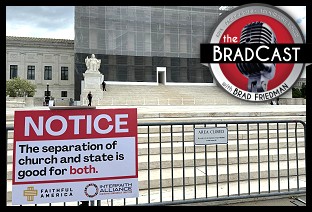 SCOTUS Weighs Public Funding of Religious Schools: 'BradCast' 5/7/25
SCOTUS Weighs Public Funding of Religious Schools: 'BradCast' 5/7/25 Trump Judge Blocks NC GOP Theft of 2024 Supreme Court Seat: 'BradCast' 5/6/25
Trump Judge Blocks NC GOP Theft of 2024 Supreme Court Seat: 'BradCast' 5/6/25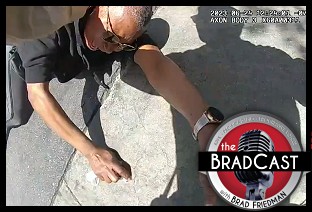 Prosecutors Quit After U.S Attny Strikes Deal With Felon Cop: 'BradCast' 5/5/25
Prosecutors Quit After U.S Attny Strikes Deal With Felon Cop: 'BradCast' 5/5/25 Trump Losing Streak Continues into SECOND Hundred Days: 'BradCast' 5/1/25
Trump Losing Streak Continues into SECOND Hundred Days: 'BradCast' 5/1/25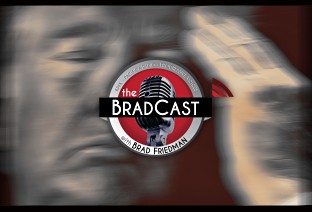 100 Daze (w/ Digby and Driftglass): 'BradCast' 4/30/25
100 Daze (w/ Digby and Driftglass): 'BradCast' 4/30/25 Campaign to 'Impeach Trump Again' Gains Fresh Momentum: 'BradCast' 4/29/25
Campaign to 'Impeach Trump Again' Gains Fresh Momentum: 'BradCast' 4/29/25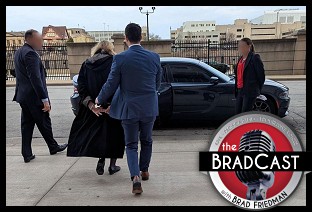 And Then They Came for the Judges...: 'BradCast' 4/28/25
And Then They Came for the Judges...: 'BradCast' 4/28/25 Trump EPA Guts Enviro Justice Office: 'BradCast' 4/24/25
Trump EPA Guts Enviro Justice Office: 'BradCast' 4/24/25
 VA GOP VOTER REG FRAUDSTER OFF HOOK
VA GOP VOTER REG FRAUDSTER OFF HOOK Criminal GOP Voter Registration Fraud Probe Expanding in VA
Criminal GOP Voter Registration Fraud Probe Expanding in VA DOJ PROBE SOUGHT AFTER VA ARREST
DOJ PROBE SOUGHT AFTER VA ARREST Arrest in VA: GOP Voter Reg Scandal Widens
Arrest in VA: GOP Voter Reg Scandal Widens ALL TOGETHER: ROVE, SPROUL, KOCHS, RNC
ALL TOGETHER: ROVE, SPROUL, KOCHS, RNC LATimes: RNC's 'Fired' Sproul Working for Repubs in 'as Many as 30 States'
LATimes: RNC's 'Fired' Sproul Working for Repubs in 'as Many as 30 States' 'Fired' Sproul Group 'Cloned', Still Working for Republicans in At Least 10 States
'Fired' Sproul Group 'Cloned', Still Working for Republicans in At Least 10 States FINALLY: FOX ON GOP REG FRAUD SCANDAL
FINALLY: FOX ON GOP REG FRAUD SCANDAL COLORADO FOLLOWS FLORIDA WITH GOP CRIMINAL INVESTIGATION
COLORADO FOLLOWS FLORIDA WITH GOP CRIMINAL INVESTIGATION CRIMINAL PROBE LAUNCHED INTO GOP VOTER REGISTRATION FRAUD SCANDAL IN FL
CRIMINAL PROBE LAUNCHED INTO GOP VOTER REGISTRATION FRAUD SCANDAL IN FL Brad Breaks PA Photo ID & GOP Registration Fraud Scandal News on Hartmann TV
Brad Breaks PA Photo ID & GOP Registration Fraud Scandal News on Hartmann TV  CAUGHT ON TAPE: COORDINATED NATIONWIDE GOP VOTER REG SCAM
CAUGHT ON TAPE: COORDINATED NATIONWIDE GOP VOTER REG SCAM CRIMINAL ELECTION FRAUD COMPLAINT FILED AGAINST GOP 'FRAUD' FIRM
CRIMINAL ELECTION FRAUD COMPLAINT FILED AGAINST GOP 'FRAUD' FIRM RICK SCOTT GETS ROLLED IN GOP REGISTRATION FRAUD SCANDAL
RICK SCOTT GETS ROLLED IN GOP REGISTRATION FRAUD SCANDAL VIDEO: Brad Breaks GOP Reg Fraud Scandal on Hartmann TV
VIDEO: Brad Breaks GOP Reg Fraud Scandal on Hartmann TV RNC FIRES NATIONAL VOTER REGISTRATION FIRM FOR FRAUD
RNC FIRES NATIONAL VOTER REGISTRATION FIRM FOR FRAUD EXCLUSIVE: Intvw w/ FL Official Who First Discovered GOP Reg Fraud
EXCLUSIVE: Intvw w/ FL Official Who First Discovered GOP Reg Fraud GOP REGISTRATION FRAUD FOUND IN FL
GOP REGISTRATION FRAUD FOUND IN FL

































